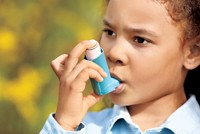Advertisement
Grab your lab coat. Let's get started
Welcome!
Welcome!
Create an account below to get 6 C&EN articles per month, receive newsletters and more - all free.
It seems this is your first time logging in online. Please enter the following information to continue.
As an ACS member you automatically get access to this site. All we need is few more details to create your reading experience.
Not you? Sign in with a different account.
Not you? Sign in with a different account.
ERROR 1
ERROR 1
ERROR 2
ERROR 2
ERROR 2
ERROR 2
ERROR 2
Password and Confirm password must match.
If you have an ACS member number, please enter it here so we can link this account to your membership. (optional)
ERROR 2
ACS values your privacy. By submitting your information, you are gaining access to C&EN and subscribing to our weekly newsletter. We use the information you provide to make your reading experience better, and we will never sell your data to third party members.
Environment
ACS Award for Creative Advances in Environmental Science & Technology
January 22, 2007
| A version of this story appeared in
Volume 85, Issue 4
Sponsored by Air Products & Chemicals in memory of Joseph J. Breen
Richard C. Flagan first began studying the formation of gaseous pollutants from combustion for his doctorate in mechanical engineering at Massachusetts Institute of Technology in the 1970s. Since then, his interest in atmospheric gases has grown to include aerosols in various settings, ranging from pollution to pollen to nanotechnology.
Flagan is the Irma & Ross McCollum/William H. Corcoran Professor of Chemical Engineering and professor of environmental science and engineering at California Institute of Technology, where he is also the executive officer for chemical engineering. Flagan, 59, received his doctorate from MIT in 1973 and joined the Caltech faculty two years later.
At Caltech, Flagan turned his attention to aerosols, initially using available instruments to probe the formation of these small particles in coal combustion and in the atmosphere. His frustration with the limitations of those instruments led him to develop the scanning electrical mobility spectrometer, a device that increased the speed and sensitivity of previous aerosol measurement devices by one to two orders of magnitude.
Before his invention, the only tool that came close to the speed needed to follow changes in chamber studies of smog formation lacked the resolution to quantify aerosol to a level of precision that Flagan and other researchers felt was needed.
To measure atmospheric aerosols, other researchers had tried using a calibration tool, the differential mobility analyzer (DMA). But the instrument was slow and unwieldy, particularly in a dynamic environment where the numbers and sizes of aerosols were changing quickly.
The standard DMA measurement took 10 to 20 minutes to complete, but with Flagan's DMA modification, measurements were done in less than a minute, and the instrument was able to differentiate a much wider spectrum of particulate sizes.
Flagan worked with TSI, a company in Minneapolis, to develop a commercial version of his prototype, which TSI called the "scanning mobility particle sizer spectrometer." It is today in standard use by atmospheric scientists.
His interest has now shifted to the size, weight, and cost of measurement instruments. The modified DMA is still a big, complex piece of equipment, he says, weighing 50 lb and costing $70,000. He predicts that with reduced size and cost, applications will grow. For instance, to ease and expand the ability to measure diesel emissions along a busy highway, scientists want a mobile instrument that can be placed near a freeway and then moved away to gauge the migration of pollutants from their source.
Flagan's goal, however, is to develop instruments that measure the personal exposures of the general population to ultrafine particles and the occupational exposures of industrial workers, particularly those in emerging nanotechnological workplaces. Also, Flagan says he now frequently joins scientists in other disciplines and applies his aerosol-based environmental research in other areas, including nanosciences.
Outside the lab, Flagan enjoys bicycling in the San Gabriel Mountains near his home. And over the past four years, he has helped organize an engineering design team of about 20 girls from the high school where his wife teaches science. They work in his garage on weekends in January and February, preparing for the "FIRST Robotics" competition in March. His wife is the leader, he says, but he helps out and has drawn in Caltech students as advisers.
The program gets kids excited about science, he notes, as well as providing a way for students to get their hands dirty with real experience.
The award address will be delivered before the Division of Environmental Chemistry.






Join the conversation
Contact the reporter
Submit a Letter to the Editor for publication
Engage with us on Twitter